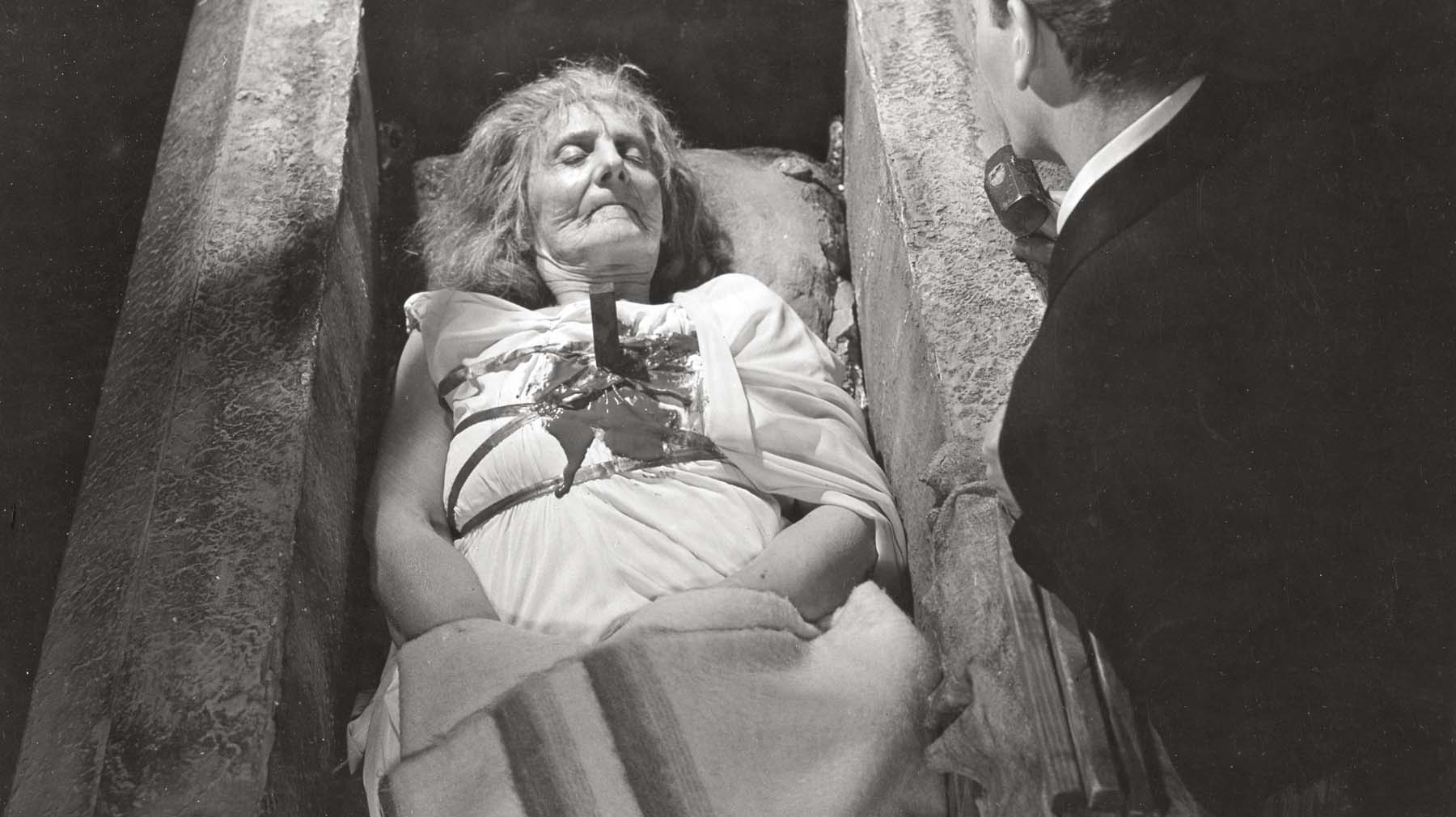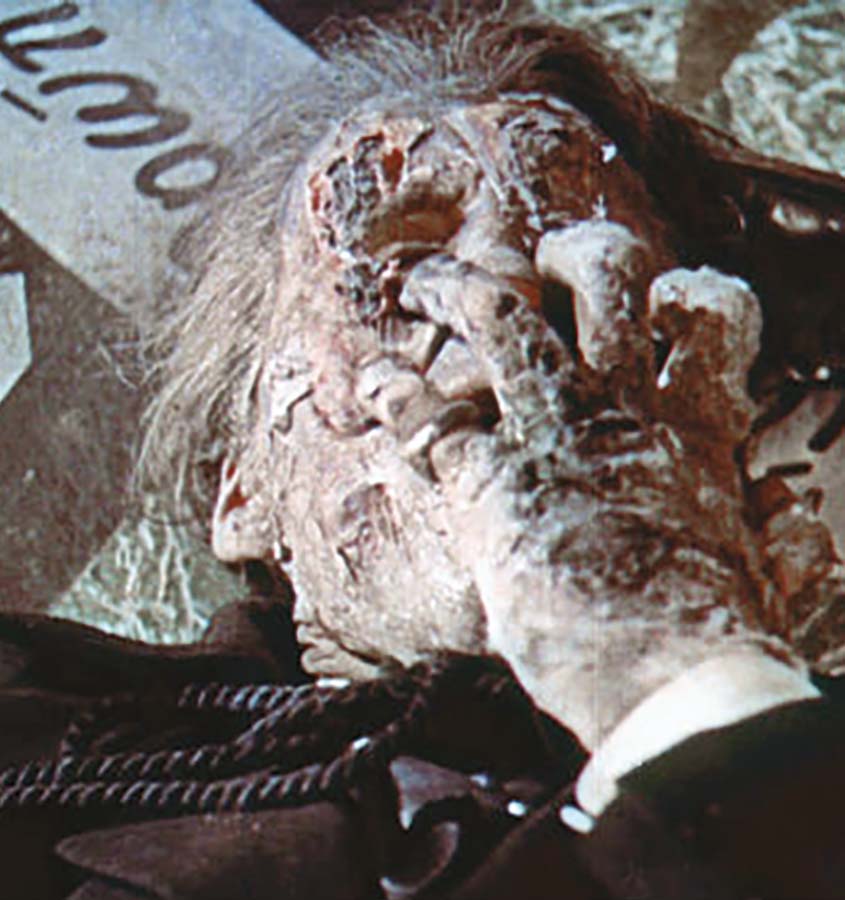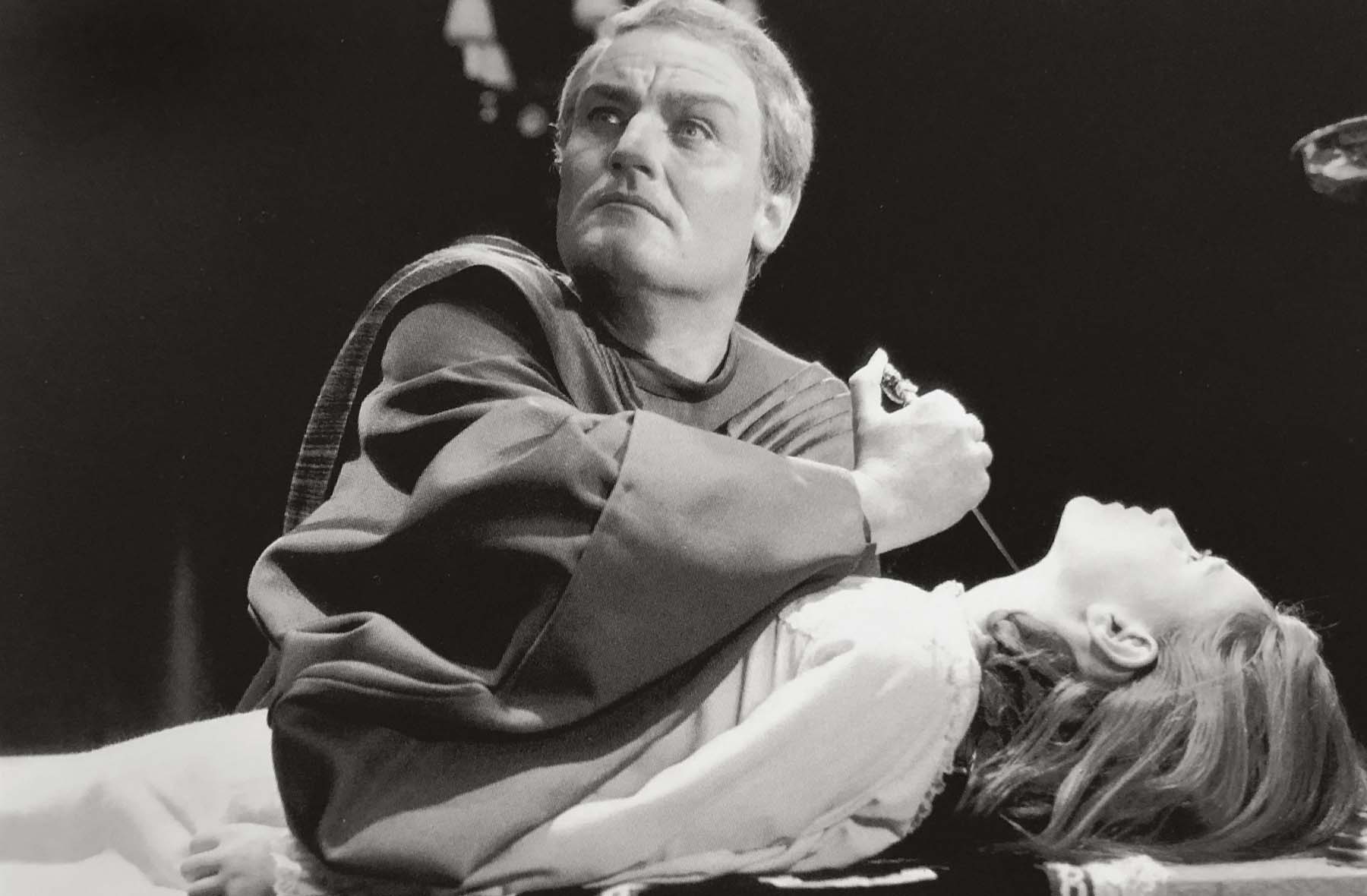
After the stake, Dracula’s bride shows her true age.

Dracula’s long-censored disintegration scene has now been completely restored.
In a subterranean crypt, Harker finds two open sarcophagi that are the vampires’ daylight resting places. He first pounds a stake through the heart of the woman, whose face and form revert to those of a withered crone. The sun sets and Dracula awakes, already out of his sarcophagus before Harker can reach him. The vampire, Harker realizes, has won. The silhouette of Dracula blocks the crypt’s entrance before the heavy door clangs shut and everything is darkness.
The remainder of the film very roughly follows Stoker’s plotline. Another vampire hunter, Doctor Van Helsing (Peter Cushing), looks for Harker at Castle Dracula and finds him converted into a vampire. Van Helsing releases Harker’s soul with the hammer and stake, and discovers among Harker’s belongings that Dracula has taken Harker’s keepsake photograph of his fiancée, Lucy (Carol Marsh). Dracula is already visiting Lucy, transforming her into a foul creature of the night like himself. Dracula turns his malign attention to Arthur’s wife, Mina, and abducts her back to his castle to replace the bride that Harker killed. Van Helsing confronts Dracula in the castle library and rips down a set of heavy curtains, allowing morning light to flood the room and reduce the vampire to dust.
British cultural critic Christopher Frayling has made a compelling argument that Horror of Dracula may function as an unintentional allegory about the pleasures and pitfalls of adultery—for both men and women—in postwar Britain. The “horror” of Dracula is that of a demon lover who can violate marriage beds with impunity. Like infidelity, Dracula is dangerous but disturbingly attractive. Christopher Lee was the first screen Dracula with convincing sexual magnetism, though his steely erotic purposefulness also makes him a troubling and problematic personification of sexual assault. Lee, of course, became the leading screen interpreter of Dracula in the post-Lugosi period, returning to the role in Hammer’s Dracula, Prince of Darkness (1966), Dracula Has Risen from the Grave (1968), Taste the Blood of Dracula (1970), Scars of Dracula (1970), Dracula A.D. 1972 (1972), and The Satanic Rites of Dracula (1973).
If you enjoyed Horror of Dracula (1958), you might also like:
THE DEVIL RIDES OUT
HAMMER FILMS, 1968
